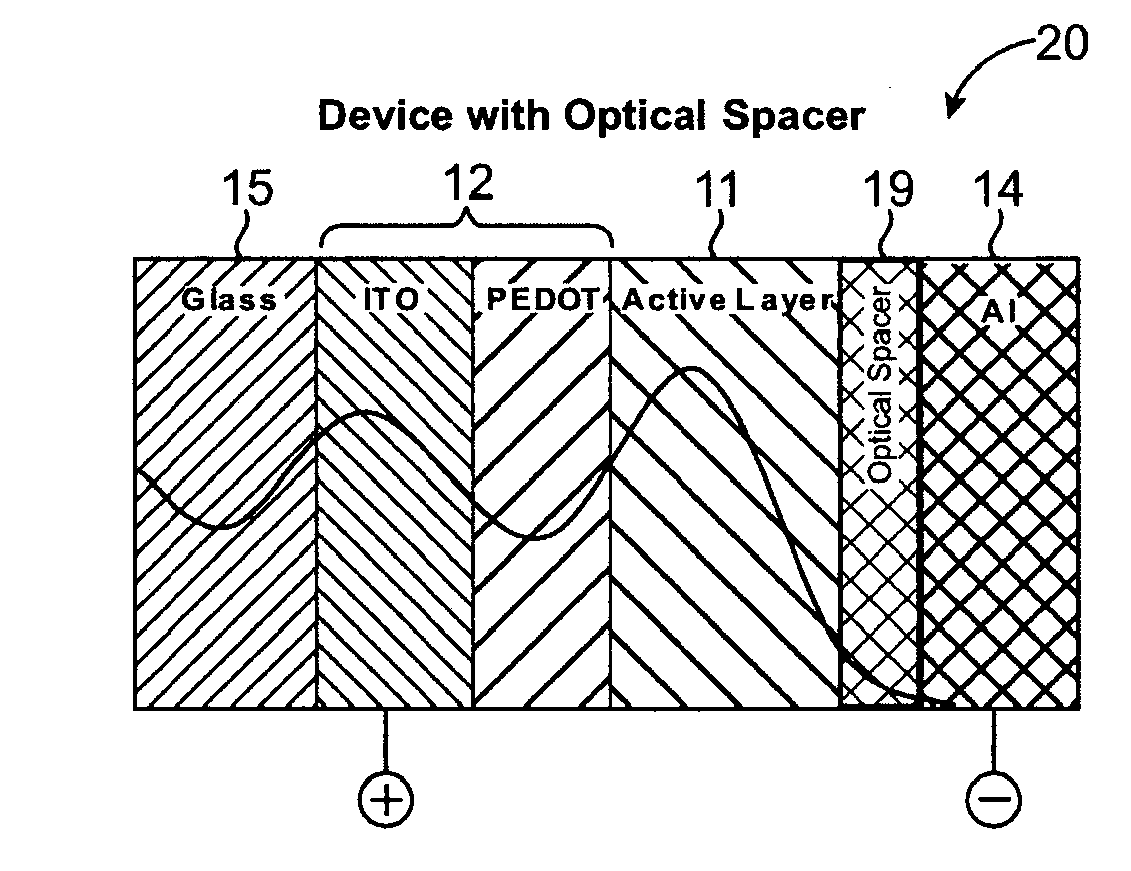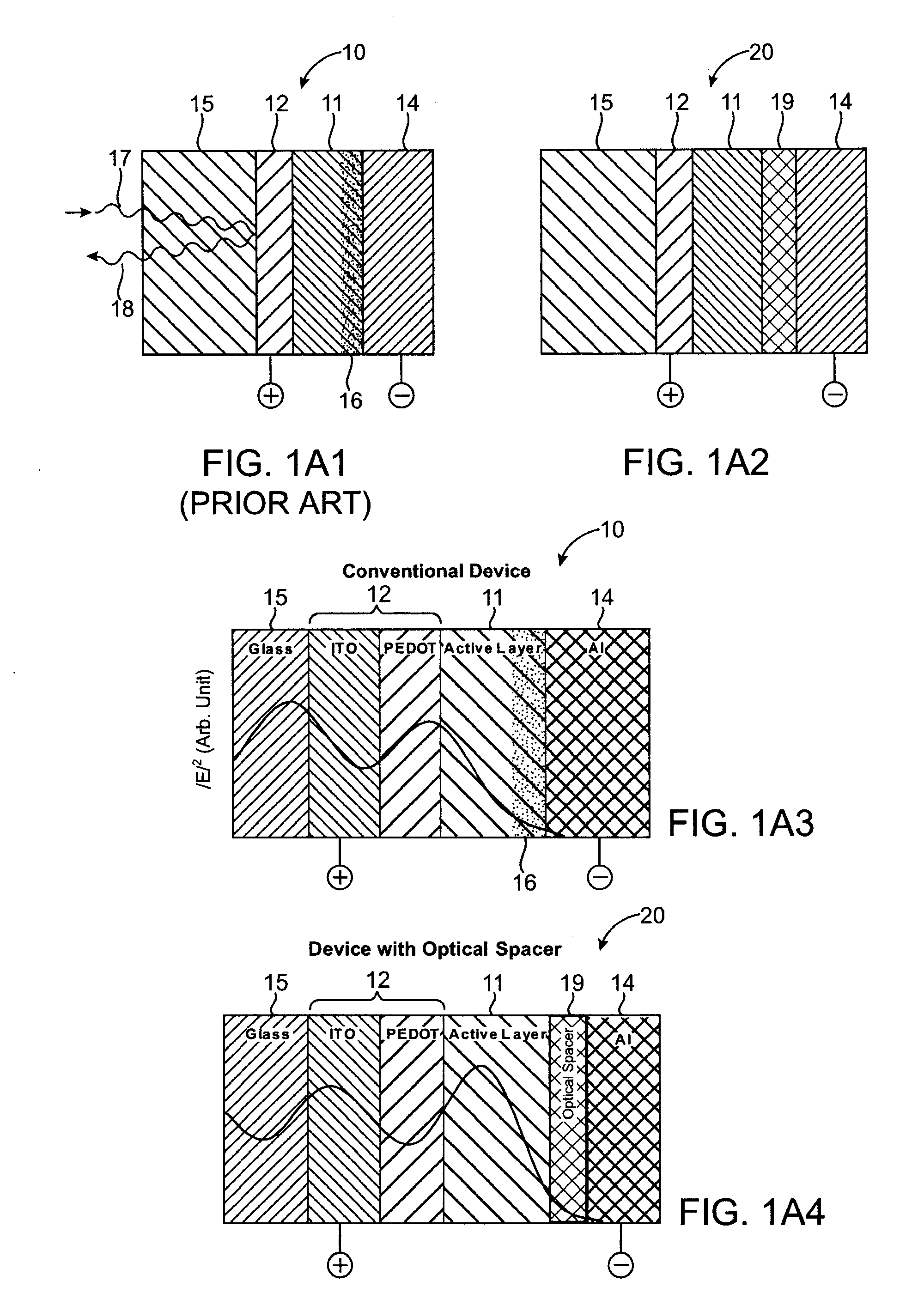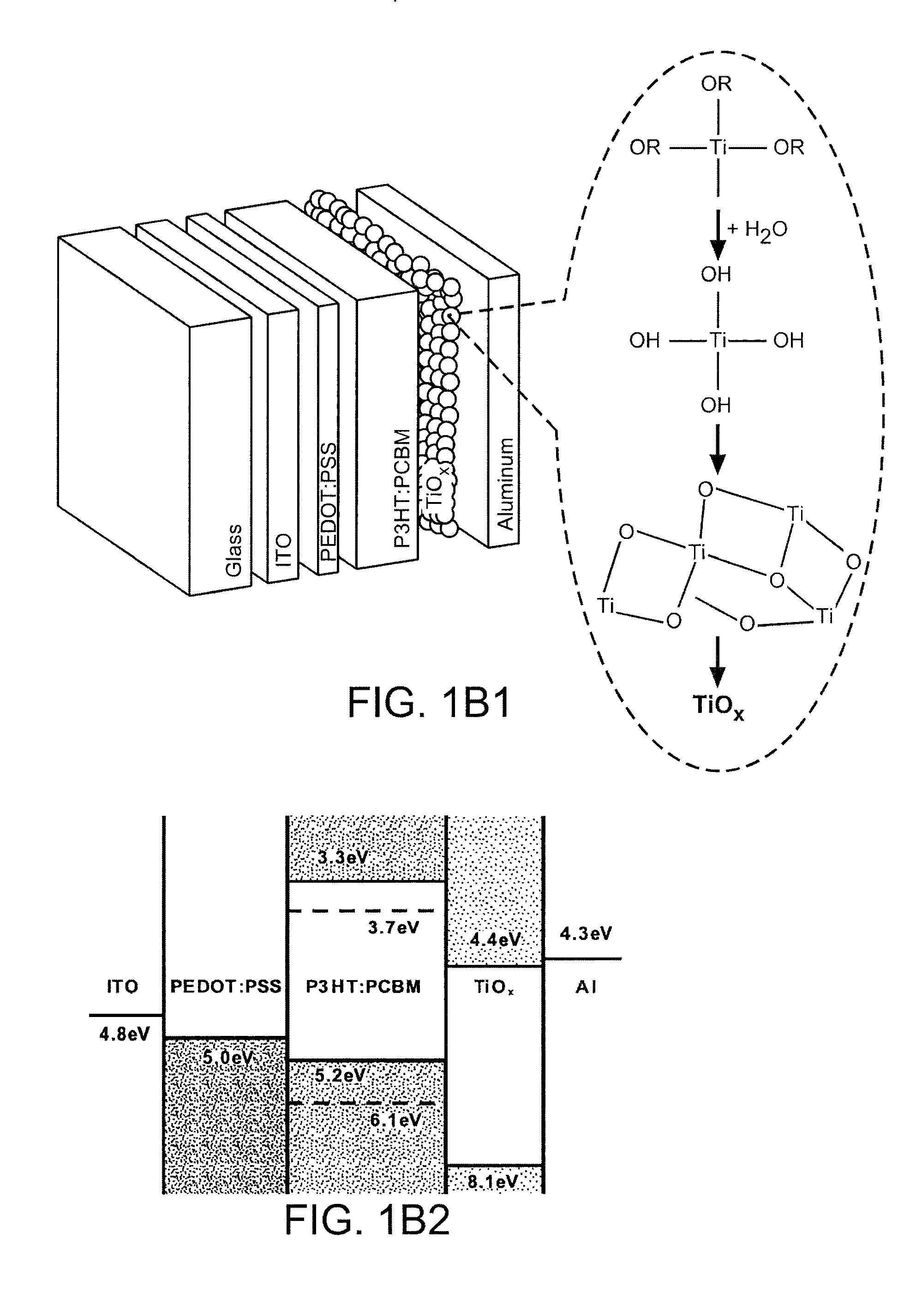Architecture for high efficiency polymer photovoltaic cells using an optical spacer
a polymer and optical spacer technology, applied in the direction of semiconductor devices, solid-state devices, nanoinformatics, etc., can solve the problems of reducing the photovoltaic conversion efficiency, reducing the fill factor, and not meeting realistic commercialization specifications, so as to achieve the effect of redistributing the light intensity inside the devi
- Summary
- Abstract
- Description
- Claims
- Application Information
AI Technical Summary
Benefits of technology
Problems solved by technology
Method used
Image
Examples
example 1
[0084]The sol-gel procedure for producing TiOx is as follows; titanium isopropoxide (Ti[OCH(CH3)2]4, Aldrich, 97%, 10 mL) was prepared as a precursor, and mixed with 2-methoxyethanol (CH3OCH2CH2OH, Aldrich, 99.9+%, 150 mL) and ethanolamine (H2NCH2CH2OH, Aldrich, 99.5+%, 5 mL) in a three-necked flask equipped with a condenser, thermometer, and argon gas inlet / outlet. Then, the mixed solution was heated to 80° C. for 2 hours in silicon oil bath under magnetic stiffing, followed by heating to 120° C. for 1 hour. The two-step heating (80° C. and 120° C.) was then repeated. The typical TiOx precursor solution was prepared in isopropyl alcohol.
[0085]For the preparation of the polymer-fullerene composite solar cells in the structure shown in FIGS. 1A4 and 1B1 and 1B2, we used regioregular poly(3-hexylthiopene) (P3HT) as the electron donor, and the fullerene derivative, [6,6]-phenyl-C61 butyric acid methyl ester (PCBM) as the electron acceptor. The P3HT:PCBM composite weight ratio was 1:1. ...
PUM
| Property | Measurement | Unit |
|---|---|---|
| thickness | aaaaa | aaaaa |
| temperature | aaaaa | aaaaa |
| transparent | aaaaa | aaaaa |
Abstract
Description
Claims
Application Information
 Login to View More
Login to View More - R&D
- Intellectual Property
- Life Sciences
- Materials
- Tech Scout
- Unparalleled Data Quality
- Higher Quality Content
- 60% Fewer Hallucinations
Browse by: Latest US Patents, China's latest patents, Technical Efficacy Thesaurus, Application Domain, Technology Topic, Popular Technical Reports.
© 2025 PatSnap. All rights reserved.Legal|Privacy policy|Modern Slavery Act Transparency Statement|Sitemap|About US| Contact US: help@patsnap.com



